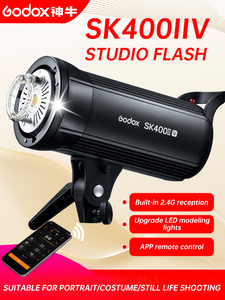(9048 products available)
































































































































































































































Battery-powered strobe lights are flashing lights that work without plugging into a power outlet. They have different types to suit various needs. Some common types of battery-operated strobe lights include the following:
Although battery powered strobe light s are used in different industries, they all have the same features. These include:
Brightness
For lights to meet NFPA standards, they must have a minimum photometric output. In the case of LED lights, the output must be at least 110 cd for Class B, 250 cd for Class C, and 900 cd for Class C. These standards apply to both AC and DC supplies.
Field of view
Field of view is the angular extent of the observable world at any given time. Strobe lights vary with the Field of View (FOV) and the Coverage (COV) respectively. The FOV is the angle subtended by the limit of vision at the eye and is denoted by α. FOV = 2 π (Field of View) /360° = 2 π /α = 2π radians for a full circle. Covergence (COV) is the angle on which the eye is focused and is denoted by β. COV = 2π (Convergence) /360° = 2π for a full circle. COV and FOV depend on β and α respectively. The field and the optical axes coincide when the eye is focused on an object.
Flash rate
Flash rate is the measurement of the number of flashes that a light produces in a certain time interval, usually measured in hertz (Hz) or flashes per second (fps). It is an important feature of strobe lights because it determines the effectiveness of the light in drawing attention. The flash rate may vary depending on the model and the application. Some lights may have a variable flash rate that can be adjusted to suit specific needs.
Rugged housing
The housing of strobe lights must be durable and weatherproof. It must also be resistant to impact, vibration, and corrosion, especially in industrial and outdoor applications. Strobe lights are used in firefighting, military, and law enforcement applications. Their housing must meet certain standards to ensure that the light will work when needed the most. The housing must meet standards such as IP65, which indicates dust-tight and protection against water jets, and IP66, which protects against water entry when exposed to high-pressure jets. Strobe lights with explosion-proof housing can be used in hazardous locations.
Mounting options
A battery-operated strobe light can be mounted in different ways to suit specific requirements. The light can be mounted on poles, walls, tripods, or vehicles. It can also be handheld for portable use. The mounting options should allow for flexible and secure installation of the light in various positions.
Run time
Run time is the total time a strobe light can function on a fully charged battery or battery pack. It is an important feature of flashlight strobes because it indicates how long the light can operate in an emergency or critical situation where recharging or replacing the battery is not possible. The run time may vary depending on the model, battery type, and light intensity. Some lights may offer a runtime of several hours to ensure long-lasting visibility.
Battery management system (BMS)
The Battery Management System (BMS) of strobe lights is a system that monitors and controls batteries. Its function protects the battery's performance and lifespan. The BMS ensures that the batteries are charged and discharged properly. It also prevents overcharging, deep discharge, excessive current, and excessive temperatures. The BMS also balances the cells to ensure even charging and discharging.
Strobe lights, which run on batteries, are flexible tools that can be used in a variety of fields and for a variety of hobbies.
A strobing LED light is bright. Strobe lights can cause photosensitive epilepsy if the person is sensitive to strobing LED light. The strobe light may have a warning if there are flashing lights at the location. People with certain medical conditions may not do well with strobe lights. These lights should be avoided in such cases. Because of this, consider the following when choosing a strobe light for a specific application:
Q1: How long do the batteries last in a strobe light?
A1: The battery life depends on the strobe light intensity and frequency and and how long the light is used. For example, a 9,000 mAh battery can last up to 20 hours at low intensity.
Q2: How bright do strobe lights get?
A2: The LED light's brightness is measured in lumens. Battery-powered strobe lights can range from 60-2,300 lumens, but some lights may be brighter.
Q3: Are there different lens styles?
A3: Yes, strobe lights come with various lens styles that diffuse or concentrate the light. They can have elliptical, linear, wide-angle, or point source lenses.
Q4: Are strobe lights waterproof?
A4: Not all strobe lights are waterproof, but some are. Waterproof models will have an IP rating that shows the level of water and dust resistance.
Q5: How far away can someone see the strobe light?
A5: In ideal conditions, the light can be seen from 1/2 a mile to over 3 miles.